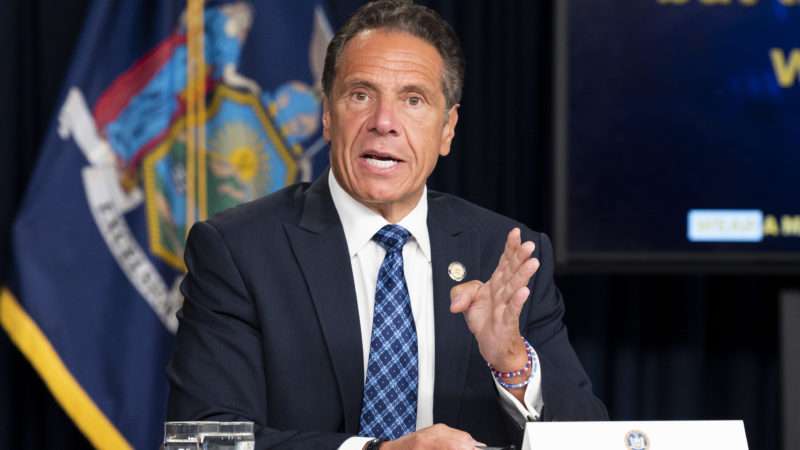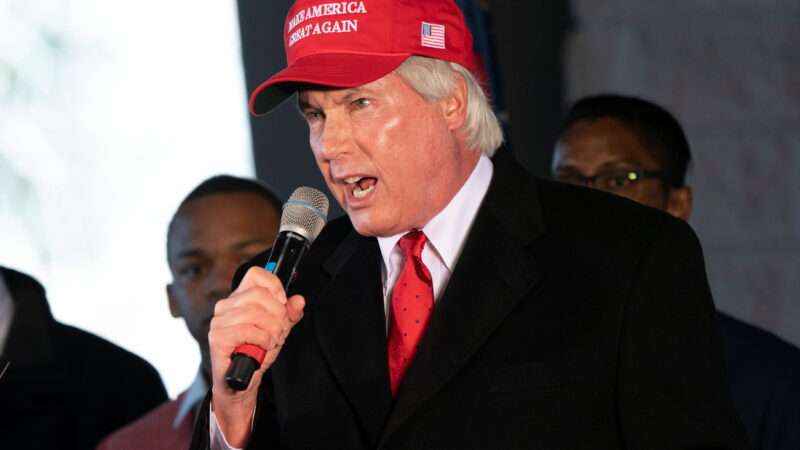
Emergency eviction moratoriums were some of the first policies enacted to deal with the COVID-19 pandemic. They could end up outlasting it.
On Monday, New York Gov. Andrew Cuomo signed a bill that will stall most eviction proceedings for 60 days and impose a moratorium on evicting residential tenants who make a declaration of COVID-related hardship until May 2021.
The new law, which goes into effect immediately, also puts a moratorium on foreclosure proceedings through May for property owners with 10 or fewer units who make a similar hardship declaration. It also prevents local governments from seizing homes for unpaid taxes.
“This law adds to previous executive orders by protecting the needy and vulnerable who, through no fault of their own, face eviction during an incredibly difficult period for New York,” Cuomo announced in a statement. “The more support we provide for tenants, mortgagors and seniors, the easier it will be for them to get back on their feet when the pandemic ends.”
Cuomo issued his first executive order in this area in March, with a measure barring residential evictions and foreclosures for 90 days. Since then, the governor has enacted nine more executive orders extending and modifying these protections.
In June, he signed the Tenant Safe Harbor Act, which prevents tenants from being physically evicted for nonpayment of rent so long as Cuomo’s other executive orders restricting business activities and nonessential gatherings remain in place. The bill signed by Cuomo this week goes further, by preventing landlords from even filing for evictions and staying ongoing eviction proceedings for the next five months.
Landlord and tenant groups are typically on opposite sides of the eviction moratorium debate, but they have offered near-identical criticisms of the new law, calling it a temporary band-aid that does nothing to address the back rents tenants have accumulated or the financial hardship landlords have experienced.
“This bill is a stall tactic,” argued Jay Martin, executive director of a landlord association called the Community Housing Improvement Program, in a statement. “Closing the courts for a few months will not relieve the massive debt that tens of thousands of renters face, or provide any financial relief to the hundreds of housing providers who have provided safe, clean homes to millions of New Yorkers.”
“This bill is only a temporary solution to the urgent housing crisis we find ourselves in,” Housing Justice for All, a coalition of left-wing housing advocacy groups, told Politico. “In order to prevent massive economic disaster, our legislature must clear the back rent owed by New Yorkers and create a hardship fund for small landlords struggling to keep their buildings safe and afloat.”
New Yorkers will owe $435 million in back rent by January, according to a database maintained by the National Council of State Housing Agencies. The state is slated to receive $1.3 billion in federal emergency rental assistance funds.
The Empire State’s new law is part of a trend. Eviction moratoriums initially imposed by state governors as an emergency pandemic measure are now morphing into more permanent, legislatively approved programs aimed at mitigating the epidemic’s economic fallout.
A day before the enactment of New York’s law, President Donald Trump signed a relief bill that extended an eviction moratorium originally issued by the Centers for Disease Control and Prevention (CDC) through the end of January. (It had been scheduled to expire today.)
Earlier this month, Oregon lawmakers voted to extend their state’s eviction moratorium until June 30. California legislators, who in September passed an eviction moratorium for tenants who have paid at least 25 percent of their rent, are mulling a proposal to extend that policy through the end of 2021.
Imposing eviction moratoriums by executive fiat, as many governors have done, has always been legally dubious, and sparked more than a few lawsuits challenging them on separation of powers grounds. So it’s good, at least, that these policies are increasingly being enacted by legislatures.
That said, by passing eviction moratoriums into laws, officials are doubling down on a very blunt tool that comes with some unpleasant side effects and unintended consequences.
The most persuasive case for eviction moratoriums is that they prevent newly evicted people from moving in with family, friends, or into overcrowded homeless shelters, spreading coronavirus along the way. As vaccinations ramp up, causing COVID deaths and severe COVID cases to decline, that justification will become less and less convincing. Instead, moratoriums become a means for the government to provide free housing at landlords’ expense.
That’s obviously bad for property rights and for property owners who have their own operating costs to cover, and who are often put in the position of having to keep nonpaying tenants while turning away prospective renters who would pay their bills.
And despite the concerns of housing advocates that any lifting of moratoriums will result in a wave of evictions, landlords have every incentive to work out arrangements with otherwise good tenants who’ve fallen behind on the rent. The alternative is to risk a vacancy and a long search for a more reliable occupant during an economic downturn.
“Data so far show no indication of a heightened rate of eviction,” Salim Furth of George Mason University’s Mercatus Center told Reason in September. “Lighter-touch approaches, such as limiting the number of evictions, could prevent an (unlikely) homelessness emergency without impinging so drastically on private contracts.”
Some cities did see spikes in evictions in the late summer and early fall, after the early moratoriums were allowed to lapse. But those bumps can plausibly be explained by the moratoriums themselves, which led evictions that would have been filed over the course of several months to happen all at once.
Maintaining eviction moratoriums well into 2021 could well cause the oft-predicted eviction “tsunami” that the policy is intended to prevent.
With any luck, the vaccination effort that’s beginning this month will soon allow us to return to something approaching normal life. That return to normality isn’t helped by enshrining emergency policies into law.
from Latest – Reason.com https://ift.tt/3nccTG1
via IFTTT



